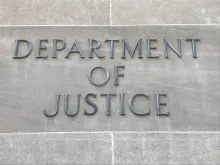Passing Go: How Associations Can Sidestep Antitrust Pitfalls in the Real-Life Game of Monopoly
September 11, 2025
U.S. enforcers and private plaintiffs are sharpening their antitrust focus on how professional associations shape members’ commercial conduct. A recent multi-state attorneys-general letter to the Science Based Targets initiative (SBTi), the Federal Trade Commission’s resolution of antitrust concerns stemming from the Clean Truck Partnership, and several new complaints illustrate the through-line. Associations remain vital for research, safety, interoperability, and credible measurement, but the legal environment is increasingly skeptical of coordinated market behavior, whether tied to pricing (MAP), compensation rules (commissions), platform access (MLS/data), or mission-driven campaigns (net-zero).
Trade associations face this skepticism in an era of regulatory uncertainty, after the U.S. Dept. of Justice and FTC recently withdrew the guidance that provided competitors with collaboration safeguards. These withdrawals widened the risks for trade associations and opened a fault line for private litigants to test. As a result, recent red flags were thrown by regulatory authorities concerned about antitrust behaviors bubbling up amongst such associations.
In August, a coalition of state attorneys general warned Science Based Targets initiative (SBTi) that its new Financial Institutions Net-Zero Standard (Standard) might violate federal and state antitrust and consumer-protection laws. The letter identified several points of the Standard which give the states “grave concerns.” Those concerns arose from the “fossil fuel transition policy” with its “steps and timelines for ceasing new financial activities and insurance services to the fossil fuel industry,” and the requirement that institutions generating more than 5% of revenue from financial activities must use the Standard when setting targets.
The AGs framed the Standard as a potential group boycott or output restriction, with agreements among competitors to deny services or restrict production. The letter emphasized that “good intentions” do not sanitize anticompetitive coordination. The letter, with more than 20 state AG signatories, requested documents to further the states’ investigation.
Similarly, the FTC secured assurances from the Clean Truck Partnership members that they would not abide by the California Air Resources Board’s (CARB) zero emissions production requirements, which the FTC viewed as output restrictions. The four manufacturers and their trade association that negotiated the Partnership terms committed that they disclaimed the CARB requirements and promised to act independently after the FTC raised anticompetitive concerns that the agreement reduced access to affordable diesel-powered trucks.
In addition, recent cases have sprung up featuring professional associations accused of antitrust violations. The cases highlight important takeaways that associations should carefully consider.
In Hansen v. Archery Trade Association (ATA), the plaintiff alleges an industry-wide scheme to fix or stabilize prices for archery products facilitated by the trade association. The complaint pointed to association communications and resources that encouraged common Minimum Advertised Price (MAP) approaches and offered a template MAP policy and training. According to the complaint, the association acknowledged the antitrust limitations on trade associations and their members enforcing or setting a joint MAP policy on the one hand, but, on the other, the ATA convened manufacturers, distributors, and buying groups and facilitated MAP policies and checklists. The alleged effect, according to the complaint, was market-wide price elevation and reduced competition.
Risk takeaway: Even where an association tells members to act unilaterally, curated templates, trainings, and member-specific exchanges about pricing “guardrails” can be portrayed as facilitating a coordinated price regime, especially if coupled with monitoring tools or shared enforcement know-how.
In Ya Mon Expeditions LLC v. International Yacht Brokers Association, the plaintiff targeted association rules and practices by alleging a tie that forces sellers to pay the buyer’s broker and standardize commission splits in exchange for access to the listing services. The “Buyer-Broker Commission Rule” is marketed as free services to the buyer, but the market realities are that the seller pays for the buyer’s services because the association requires it. The complaint also alleges the association hinders competitive pricing by locking sales-price data behind brokers-only portals.
Risk takeaway: Rules that tie specific compensation structures to the use of a product or service, or that institutionalize information asymmetries can be framed as concerted restraints that inflate prices or cement incumbents.
Playing Your Cards Right: Trade Association To-Dos
While the road ahead for associations navigating the current antitrust climate might resemble a classic Monopoly game board at times, with the fear of landing on Chance squares where anything might happen, there are ways associations can better their odds of passing go without landing in jail, or court nonetheless.
Design for independence and optionality
Hard-wire, and repeat, that members retain full and independent discretion over customers’ pricing, capacity, underwriting, and financing decisions. Avoid standards or “pledges” that require cutting off counterparties or reducing output to qualify for membership, certification, or access. The SBTi letter exemplifies how enforcers may recast mission-driven alignment as a boycott/output agreement.
Guard data flows
If benchmarking or research requires member input, use a trusted third party, publish aggregated and lagged outputs, and exclude member-identifiable or forward-looking variables (e.g., imminent pricing changes, capacity screens, counterparty “no-go” lists). The archery and yacht complaints show how granular exchanges plus governance ties can be painted as facilitating concerted action.
Keep access neutral; avoiding conditioning on market policies
Do not condition data access, certifications, or showcase opportunities on adopting uniform commercial rules (commission splits, underwriting bans, etc.). Where eligibility criteria are needed, make them objective, safety/quality-oriented, and non-exclusionary. Document that the trade association does not dictate prices, capacity, or counterparties. The yacht case alleges the opposite dynamic and uses governance ties to underscore concerted enforcement.
Calibrate messaging and enforcement tone
Avoid “comply-or-else,” scorecards, or member-specific tallies. Emphasize voluntary, non-binding frameworks that welcome diverse approaches. In climate/ESG contexts, separate measurement standards from members’ business decisions to reduce boycott/output risk, and be mindful of state insurance and anti-ESG laws that the SBTi letter and the Clean Truck Partnership matter highlight.
Involve antitrust counsel early
Have counsel vet agendas, surveys, standards language, portals, and public statements; attend sensitive meetings; and maintain clean minutes. Counsel can pressure-test whether an initiative looks like information-exchange with future conduct, a de facto mandate, or exclusionary access—the core themes animating today’s complaints and investigations.
Bottom line: Build programs that enhance market function without aligning members’ future competitive decisions, and you’ll protect both your mission and your members without getting your assets knocked off the board.
You may also like






